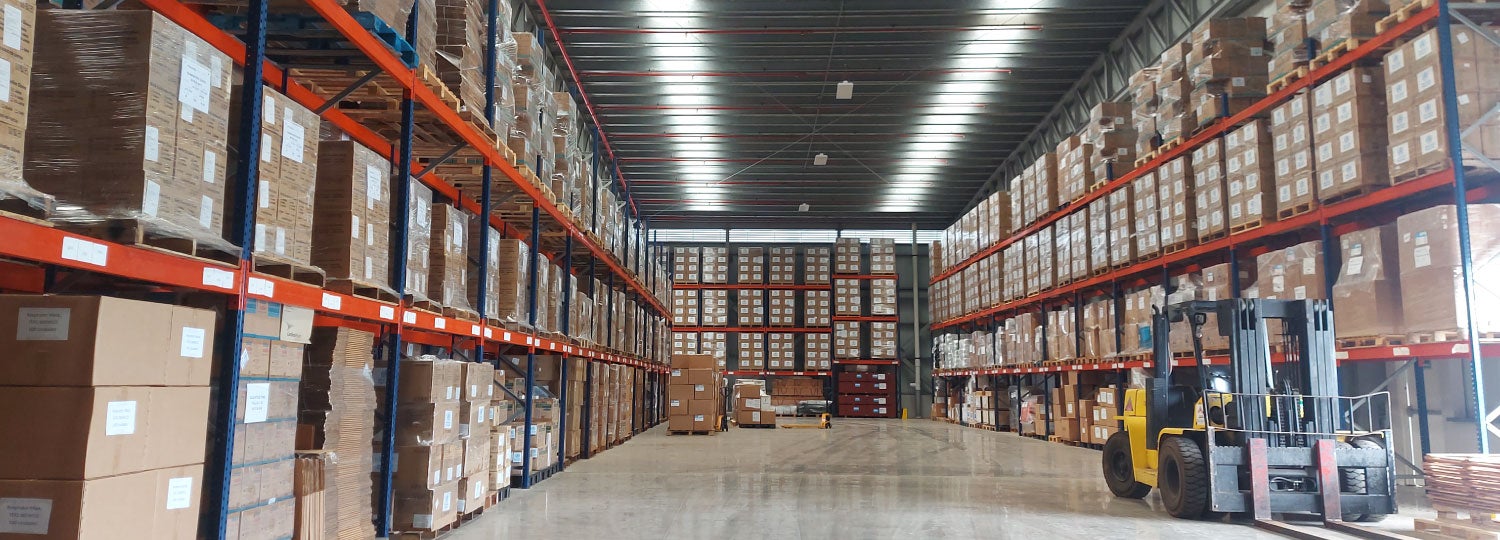Receiving the donations that pour into a disaster-stricken country is not an easy task. The flow of solicited and unsolicited relief supplies is often so overwhelming that it exceeds the ability of the country or an NGO to handle it.
Supply management practical information
This section contains practical information on the management of humanitarian supplies. It was prepared by the Humanitarian Supply System, to help both donors and recipients when a disaster occurs.
Preparing and dispatching donated supplies +
- When packing supplies, use materials resistant enough to withstand the journey and the handling that the parcels will suffer.
- Prepare a packing list describing the contents, ideally broken down by parcel.
- Insert the packing list in one of the parcels and mark it "Packing List." Protect this list inside a water-resistant envelope.
- Make parcels of a weight, size, and form that can be handled by one person (between 25 kg - 50 kg maximum). Remember that very often in the field, there is no equipment to unload and handle cargo.
- Pack supplies in separate parcels according to their nature (clothes, drugs, food, personal needs, etc.)
- Identify parcels that belong to the same consignment with consecutive numbers that relate to the total number of parcels in the shipment (i.e., on a consignment of 100 parcels, number 1/100, 2/100, 3/100, 4/100 and so on up to 100/100).
- Label visibly every parcel with the name, address and telephone of the sender and the consignee, and any other specific characteristics of the cargo: fragile, urgent, need refrigeration, etc.
- Inform consignees about the dispatch of every single shipment. Include information about the consignment (packing list, number of parcels, etc.), how it was sent (type, company, characteristics, person in charge, etc.), its exact destination, arrival point and estimated time of arrival.
- Verify and provide any special needs for the transport of the supplies (i.e. refrigeration).
- Don't send any supplies that have not been requested by the disaster-stricken country.
- Don't mix together in the same parcel items of a different nature (drugs, food, clothes, etc.)
- Don't clog relief channels with donations that are not urgently needed.
- Be on site to supervise the unloading process: to avoid mishandling and to count the parcels.
- Verify that the contents of the cargo received match the information on the documents enclosed (quality and quantity). Report ASAP to the sender any problems or discrepancies.
- Use standard procedures, forms, and SUMA classification categories to register incoming supplies.
SUMA System
PAHO/WHO has developed the SUMA system, a methodology that helps strengthen the preparedness and management capacity of the organizations that receive relief supplies. SUMA helps countries effectively and transparently manage the large-scale influx of humanitarian supplies.
SUMA classification categories +
- Medicines
- Water and sanitation
- Health
- Food and beverages
- Shelter/Housing/Electricity/Construction
- Logistics/Administration
- Personal needs/ education
- Human's Resources
- Agriculture/Cattle industry
- Unsorted/Request technical assistance (physicians, pharmacists, etc.) to classify medical items.
- Use the "Unsorted" option to classify shipments with expired or useless items, or items that are too varied to classify on-the-spot.
- Clearly label all boxes and packages with the appropriate priority level, according to SUMA methodology.
Priority level - SUMA methodology +
Priority 1: URGENT-IMMEDIATE DISTRIBUTION: items that require immediate distribution at the site of the emergency.
- Mark the supplies of no foreseeable use or benefit (i.e. expired, damaged, useless or unidentifiable) as Priority 3: NON-PRIORITY ARTICLES to sidetrack them out of sight.
Use Priority 2: NON-URGENT DISTRIBUTION for other items which are not of immediate use in the emergency phase, but still may be of use later during reconstruction or development.
- Share data about your supplies with other agencies. Institutional secrecy and a lack of transparency damages the relief effort and your image.
- Don't assign priority 1 to most items. It is counterproductive and self- defeating. The objective is to give preferential treatment to a limited amount of supplies of immediate use and benefit.
- Don't let valuable supplies go unregistered! Keeping a paper trail of donations is the best safeguard against abuses and the best guarantee that the supplies will reach the intended beneficiaries.

